This winter I was pleased to find a very attractive mask on EBay,™ one that I recognized as similar to some that I had seen in two related books. It came with some information—”Vintage Mexican Wooden Mask used in the Moros & Cristianos dance in Sacatlan Puebla. This mask was purchased in 1981.” So we have the name of the place where this mask was danced (actually Zacatlán, Puebla, which is west of Teziutlán and on the western edge of the Sierra de Puebla mountain chain), the name of the dance, and we know that it was made prior to 1981; it is at least 35 years old. Although I found a reference to the performance of the Moros y Cristianos dance in Zacatlán, I was unable to find any video or image of this performance.
Here is that mask.
I find this a very handsome mask, and call your attention to the carefully carved eyes. There are cracks in the wood, but I doubt that they will endanger the stability of the mask.
The brows, mustache, and goatee are also very well carved in relief. On the other hand, this mask lacks carved ears. In the Sierra de Puebla and adjacent areas, one may find carved ears on the Huehue or Tejonero masks but not necessarily on the masks worn by the Moros, Cristianos, and Santiagueros. The mask featured in last week’s post, which had carefully carved ears, was from the Tejoneros dance.
The mask is unusually welcoming from this angle. It is 8 inches tall, 6½ inches wide, and 4 inches deep.
The mask demonstrates differential staining (along the sides and particularly at the chin) that reflects considerable use. A screw eye or metal staple on top, in place of a forehead hole for the top strap, is typical for northern Puebla and Veracruz, areas adjacent to the Sierra de Puebla.
Masks that look exactly like this one can be seen in an important book about Mexican dance masks, Mascaras: la Otra Cara de México/ Masks: the Other Face of Mexico, by Victor José Moya Rubio. This bilingual edition was first published in 1986; there were two prior editions that were only in Spanish. On page 124 of the third (first bilingual) edition there is a photo of a dancer wearing a mask like this in the Danza de los Santiagos, in Atempan, Puebla. A second photo shows another nearly identical mask, which was said to be old and that was worn by Santiago in the Danza de los Santiagueros in Huehuetla, Puebla; it measured 18 cm (about 7 inches) in height. As I explained in my Sierra de Puebla book, the dance of the Santiagueros can also be called the dance of the Santiagos. Under one name or the other, the dance pits Santiago (Saint James the Apostle, reincarnated in a warrior form as an archangel) against the enemies of Christ. In another book, the Museo Nacional de la Máscara: Catálogo (the catalogue of the Victor José Moya Rubio collection in the National Mask Museum of Mexico, in the city of San Luis Potosí), another “antique” mask with the same face is displayed on page 66. That very old mask was said to have been used in Puebla in la Danza de los Moros y Cristianos. I am guessing that the latter mask would have been worn by Santiago.
Another very similar mask appears on page 180 in Masken Aus Mexiko, a book in German and English about an exhibition of masks from the Rafael Coronel collection. However, the description of that mask is inaccurate, in my view.
Based on this evidence, I conclude that the Ebay mask was worn by the Santiago character in either the Moros y Cristianos or the Santiagueros dance.
I should pause here for a moment to remind you that the majority of the Mexican masks offered on EBay are decorative rather than authentic. This is why I emphasize the importance of valuable reference books as guides, when you go shopping there. In a series of posts in August 2014 (August 4, 11, 18, and 25, 2014) I discussed the decoratives at length, with particular emphasis on sorting out the traditional from the invented and falsely aged masks in a landmark book—Mexican Masks by Donald Cordry. If you have never gone back to those posts, I can only say that I put a great deal of time and energy into that series because of the importance of this subject. I would like to spare you the disappointment that comes from buying a mask that turns out to be not what it seemed. In the August posts I also noted that one needs to learn to recognize the occasional invented mask in the Moya Rubio books. Unfortunately, I would have to say the same thing about masks from the Rafael Coronel Collection that appear in various books.
I found a dance photo on the internet of Santiaguero dancers in Acatlán, Puebla, taken in 2007. The Santiago figure is wearing a similar mask, while the Santiagueros are costumed but not masked. The photographer was ClaudiaSky.
http://www.panoramio.com/photo/5262738
The next two links provide videos of the Moros y Cristianos dance in San Miguel Jojupango, Puebla, a rural community to the northeast of Zacatlán. There the Moors wear conical caps and veils while the Christians wear what look like admirals hats. There are two men and a boy who wear white shirts, straw hats, and Caucasian masks; they may be clowns. In this case there is no sign of any masked Santiago. I believe that it is uncommen for Santiago to appear in the Moros y Cristianos dance, while he remains a central character in the dance of the Santiagueros, with or without a mask. First the Moros-
www.youtube.com/watch?v=X8amcPe9y0k
Then the Cristianos; notice the pleasure they take in rhythmic stamping, thump, thump, thump. If you have never seen a live Mexican Indian dance drama, this is a good introduction due to the costumes and the obvious investment of the dancers. This is what Mexican Indian fiesta dancing is like; it is another world, compared to the North American experience.
www.youtube.com/watch?v=97RLS-pi0ew
In my Sierra de Puebla book I introduced you to Silverio Ochoa Martínez, a mask carver in Teziutlán, Puebla. He makes masks for the Santiagueros dance that are similar to this one; in fact he may have carved the Acatlán mask in the photo link. It is likely that older designs such as my EBay mask and those pictured from the Moya Rubio collection were the models for his Santiaguero masks. Here is a Pilato mask by Silverio.
It lacks the relief carved features of the EBay mask.
This mask is 7 inches tall, 5½ inches wide, and 3½ inches deep.
I believe that the back of this mask has been treated with some stain or preservative. I am uncertain of its age or degree of use, but there does seem to be slight differential staining, darker around the edge.
The last mask in this post looks quite similar to the one in the photo from Acatlán. It too was carved by Silverio Ochoa.
This mask is well carved but the design has obviously been simplified in comparison to the EBay mask that sparked this post.
This mask is 7 inches tall, 5½ inches wide, and 3½ inches deep. Silverio demonstrates care in the painting of his masks.
I purchased this mask directly from the carver and it has never been danced.
I hope that you enjoyed seeing these masks. In next week’s post I will introduce you to the tin Tourist masks from Taxco, Guerrero.

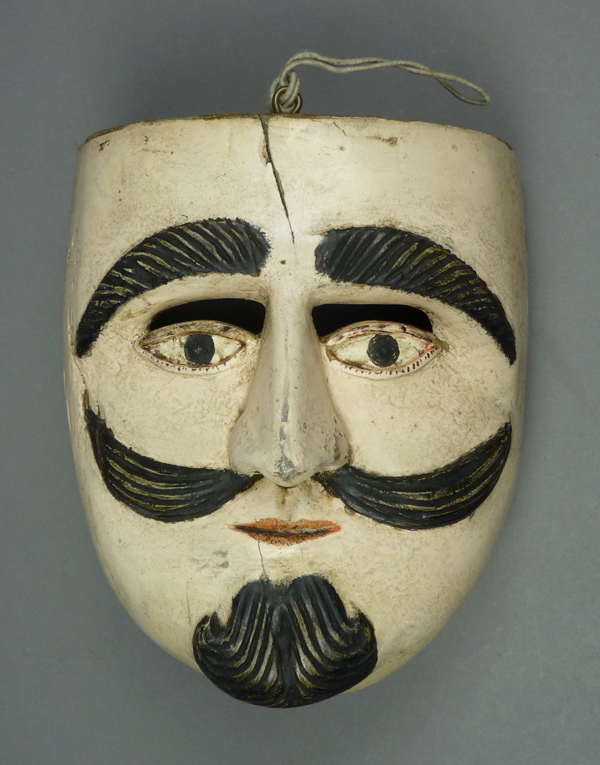

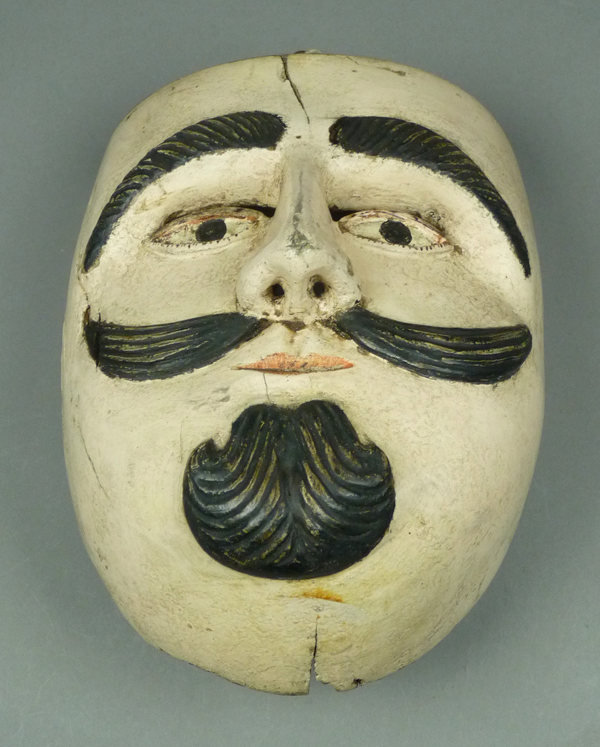
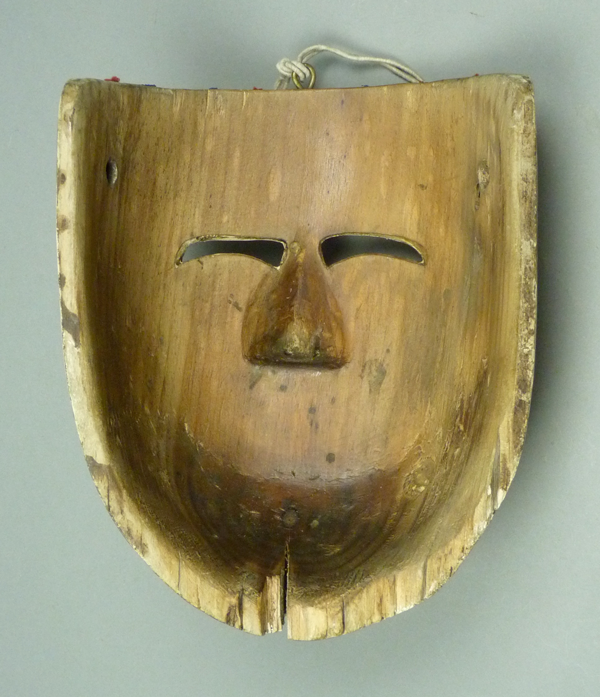
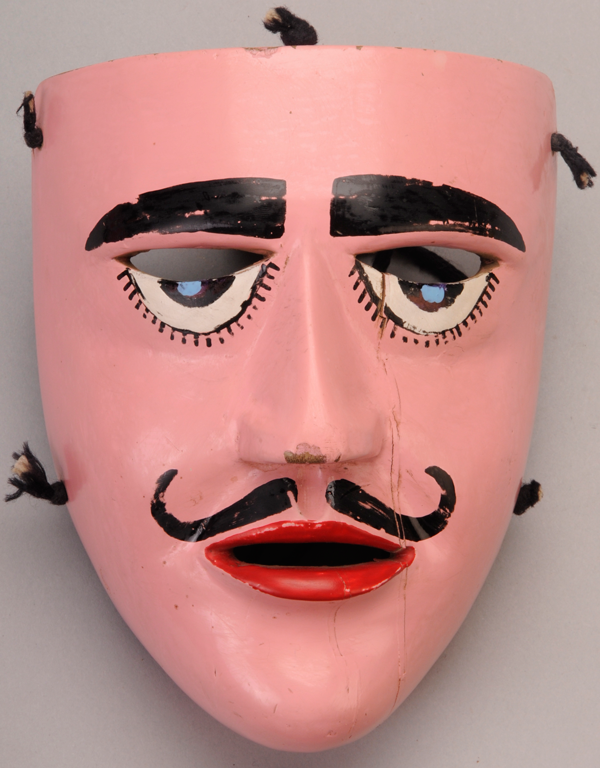
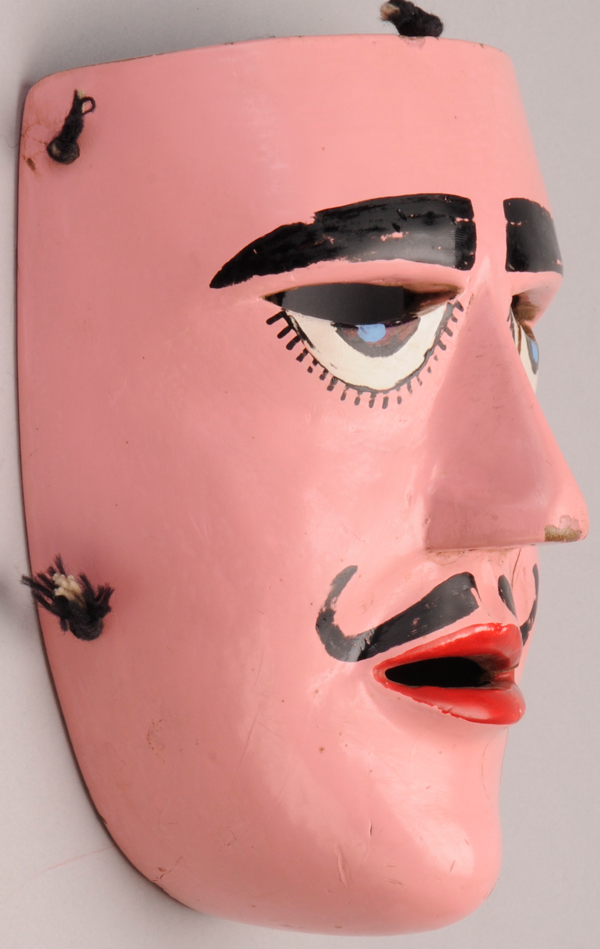
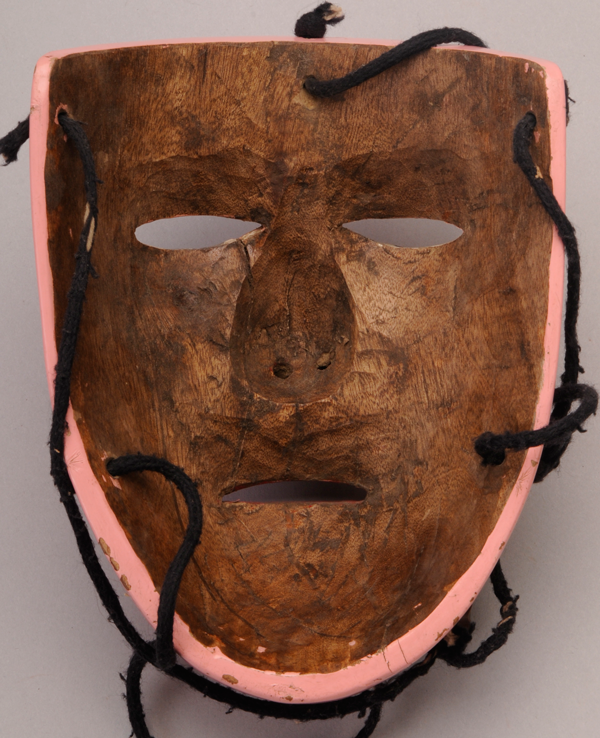

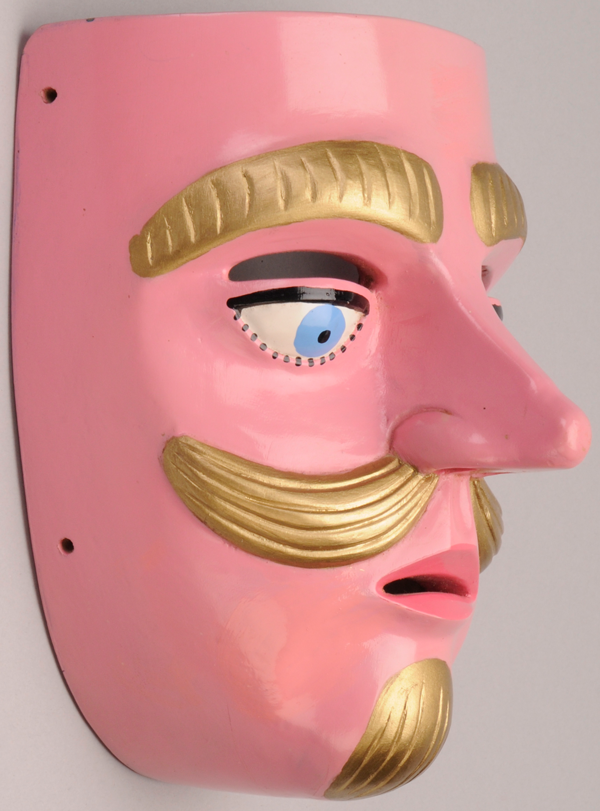

I love the first mask. with its prissy mouth and exquisitely carved features. It reminds me of a moro mask I have from the Sierra Norte that I will post. I wonder if they were executed by the same carver.
John sent photos of a very handsome mask that is indeed something like the one that sparked this post, although I view it as from another local tradition. I will show John’s mask in a future post on the subject of the Conquista dance and Mojicas of Veracruz.
Bryan Stevens